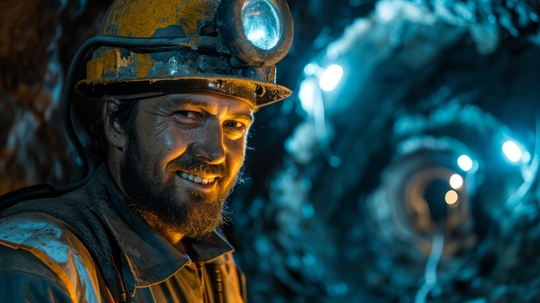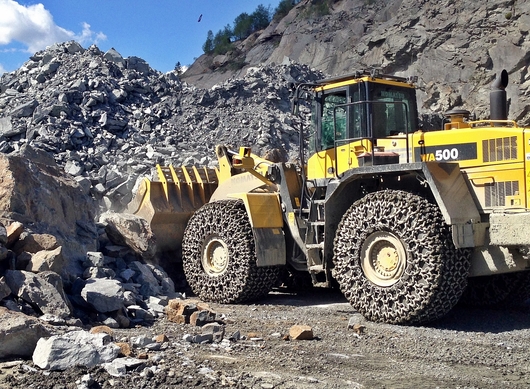Mining Safety: A Core Component of the Mining Industry
Mining safety is an essential aspect of the mining industry, where workers and operations are exposed to unique risks daily. With heavy-duty machinery, harsh environments, and hazardous materials, mining safety ensures that employees return home unscathed. Let’s explore how safety impacts the mining sector, including strategies, tools, and practices that reduce risks and foster a secure environment for everyone involved.
The Importance of Mining Safety
Mining safety focuses on preventing accidents, injuries, and fatalities in mining environments. It encompasses a range of protocols and equipment designed to protect workers and equipment. Adopting mining safety practices reduces downtime, boosts efficiency, and creates a better working atmosphere.
Mining safety encompasses the protocols, systems, and tools used to protect workers and assets in mining environments. The mining industry is inherently risky due to its hazardous nature, which includes exposure to explosives, heavy machinery, and adverse geological conditions.
It is crucial because it saves lives, protects equipment, and ensures operational efficiency. Mines are inherently dangerous, with risks of cave-ins, explosions, and toxic exposure. Prioritizing safety also fosters worker trust and boosts morale, making it a cornerstone of sustainable mining operations.

Common Hazards in the Mining Industry
The mining sector faces numerous hazards, including:
- Falling Rocks: Unstable walls can lead to rockfalls, which can severely injure workers.
- Toxic Gas Exposure: Dangerous gases like methane and carbon monoxide can accumulate underground.
- Heavy Equipment Accidents: Mismanagement of massive machinery often leads to serious incidents.
- Explosions: Flammable materials and improper handling can cause devastating explosions.
Proper mining safety measures, like hazard identification and mitigation, address these issues effectively.
Key Components of Mining Safety
Mining safety measures must address:
- Equipment Operation: Proper handling of heavy-duty machinery to avoid accidents.
- Personal Protective Equipment (PPE): Ensuring workers wear adequate safety gear, such as helmets, gloves, and boots. Personal Protective Equipment (PPE) serves as the first line of defense against injuries. Helmets, gloves, safety goggles, and respiratory masks protect workers from falling debris, hazardous materials, and airborne particles. Consistently using high-quality PPE significantly enhances mining safety.
- Training: Comprehensive training programs to educate workers on safe practices and emergency procedures. Training ensures workers understand the risks they face and how to mitigate them. Regular safety drills, workshops, and certifications equip employees with the knowledge to handle emergencies. A well-trained workforce is more confident, efficient, and less likely to make mistakes, directly contributing to mining safety.
- Safety Standards and Regulations in Mining: Global and local safety regulations are vital for guiding mining operations. These standards dictate equipment use, safety protocols, and emergency responses. Regulatory bodies enforce compliance, ensuring companies prioritize mining safety. Regular audits and inspections help identify areas that need improvement, fostering a proactive safety culture.
Safety Challenges in the Heavy-Duty Industry
The heavy-duty sector, integral to mining operations, faces unique safety challenges. Heavy machinery like excavators, bulldozers, and haul trucks operates in dynamic and unpredictable environments. Accidents involving these machines can lead to severe injuries or fatalities.
Heavy Machinery Hazards
- Mechanical Failures: Equipment malfunctions due to wear or insufficient maintenance.
- Operator Errors: Lack of training or attention leading to operational mishaps.
- Environmental Risks: Unstable terrain or inclement weather exacerbates risks.
Safety Standards and Regulations in Mining
Global and local safety regulations are vital for guiding mining operations. These standards dictate equipment use, safety protocols, and emergency responses. Regulatory bodies enforce compliance, ensuring companies prioritize mining safety. Regular audits and inspections help identify areas that need improvement, fostering a proactive safety culture.
Training and Awareness Programs
Training is a cornerstone of mining safety. Workers must understand operational risks and how to mitigate them. Programs should emphasize:
- Machine Operation Safety: How to handle equipment properly.
- Emergency Response: Steps to take during accidents or natural calamities.
- Health Awareness: Recognizing symptoms of overexertion or toxic exposure.
Regulatory Frameworks in Mining Safety
Governments and industry organizations enforce regulations to uphold safety standards. These frameworks include guidelines on equipment maintenance, workforce training, and environmental monitoring.
Compliance Benefits
- Enhanced Safety: Adherence to regulations minimizes workplace accidents.
- Operational Efficiency: A safer environment leads to smoother workflows.
- Reputation Management: Compliance showcases a commitment to worker safety, bolstering industry reputation.
How Tire Protection Chains Improve Mining Safety
Tire protection chains (TPCs) are invaluable for improving mining safety. These heavy-duty chains shield off-the-road (OTR) tires from punctures, abrasions, and cuts, extending their lifespan. Durable tires reduce the risk of equipment breakdowns in remote areas, ensuring uninterrupted operations.
Moreover, TPCs enhance traction on uneven or slippery surfaces, preventing machinery from skidding or tipping. This increased stability minimizes accidents, keeping workers safe. Investing in TPCs is a proactive step toward achieving comprehensive mining safety.
TPC: Enhancing Mining Safety
A crucial yet often overlooked safety feature in mining operations is the use of tire protection chains for Off-The-Road (OTR) tires. These chains extend tire life and significantly improve safety conditions.
Benefits of Tire Protection Chains
- Increased Durability: Chains shield tires from sharp rocks and debris, preventing punctures that could halt operations.
- Improved Traction: Enhanced grip on slippery or uneven terrain reduces the risk of machinery skidding.
- Cost Efficiency: Prolonged tire life translates into lower operational costs and fewer maintenance interruptions.

Enhancing Worker Safety
With tire protection chains, the equipment operates more reliably, reducing the risks of sudden tire failures. This contributes to a safer working environment for machine operators and ground personnel.
Conclusion
Mining safety is an indispensable aspect of the mining industry, ensuring workers’ protection and operations’ sustainability. By integrating technology, enforcing regulations, and adopting innovations like tire protection chains, the industry can mitigate risks and foster a secure working environment.
Emphasizing safety is not just a regulatory requirement but a moral obligation to the workforce that powers this essential sector. With continuous improvement in safety measures, the mining industry can achieve operational excellence while safeguarding its most valuable resource—its people.










